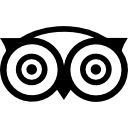08:30 – 16:00 HRS.
Depart from Chiang Mai an early morning [300 Kms.]. Arrive at Srisatchanalai Historical Park, ancient town formerly called Mueng Chaliang, was named is Satchanalai during the reign of Phra Ruang when a new administrative center was established to replace Chaliang ruins of 134 monuments have been discovered within the park. Start the historical tours with…
Wat Phra Si Rattana Mahathat; this large historic temple complex is one of the most impressive sites in the area. The decorative stucco bearing the Bayon art style of ancient Khmer found at the main entrance of the temple
Wat Chao Chan; The temple that contains a Khmer-style prang similar to the later prangs in Lopburi. It was probably built during the reign of King Jayavarman VII (1181-1217).
Wat Chom Chuen; The prominent landmark includes the principal circular stupa made of laterite, where a laterite 6-roomed wiharn with a front porch is in front of it.
Wat Chang Lom; The most important historic building at this temple is the main chedi in Sri Lankan Style, the base of the temple consists of sculptures of elephants. 39 elephants surround the temple.
Wat Chedi Jet Thaew; The large compound which contains 7 rows of chedis, the chedis reflect various art styles, including Sri Lankan, Pagan a Srivijaya styles.
Wat Nang Phaya; The exterior of the vihara made of literate blocks, which was decorated with highly elaborate stucco, in the art style of the early Ayutthaya period.
Lunch serve at the local restaurant
Continue to Sukhothai Historical Park, the first truly independent Thai Kingdom, Historical artifact have demonstrated that Thai culture, most particularly Thai alphabet and Thai language originated in Sukhothai. Visit ruins of the royal palaces, Buddhist temples, the city gates, walls, moats, dams, ditches, ponds and canals. Start the historical tours with…
King Ramkhamhaeng Monument ; The bronze statue of King Ramkhamhaeng sits on a throne named Phra-Thaen-Manangkhasila-Asana with a base relief recording his life.
Wat Mahathat; The largest temple in Sukhothai with a customary main chedi in lotus-bud shape and a ruined viharn, at the base of the Chedi stands Buddhist disciples in adoration and on the pedestal are seated Buddha images
Wat Si-Sa Wai; The ruin was once a Hindu shrine, but was later converted into a Buddhist monastery, Three prangs are surrounded by a laterite wall
Wat Traphang-Ngoen; The square pedestal, main sanctuary, and stucco standing Buddha image in four inches. There is a viharn in front, and in the east of the pond, there is an island with an Ubosot
Wat Sa-Sri; Around a Singgalese-style chedi is the main sanctuary on and island in the middle of Traphang Trakuan Pond. A large viharn contains a stucco Buddha image. To the south stands nine chedis of difference sizes
San-Ta-Pha-Saeng or “Deity Shrine” This monument consists of only one laterite prang with a staircase in the front. Sandstone Hindu divine objects (Lop Buri-style) were discovered here.
Wat Sorasak; The temple was built when the Ayutthaya controlled over Sukhothai. It is believed this way because it was inscribed about “Augya” that is the rank of nobleman in Ayutthaya period.
Wat Sri Chum; The square mondop which is the main sanctuary contains a monumental stucco-over-brick Buddha image in the attitude of Subduing Mara called “Phra Achana.”. This Buddha measures 11.30 meters from knee to knee.
Wat Phra-Phai-Luang; formerly a Khmer-Hindu shrine but later converted into a Buddhist monastery, is surrounded by a moat. It is second in importance to Wat Mahathat. Then back to Chiang Mai late evening
Unique Tours © 2024

 +84335.253.299
+84335.253.299 info@uniquetours.com
info@uniquetours.com www.uniquetours.com
www.uniquetours.com










